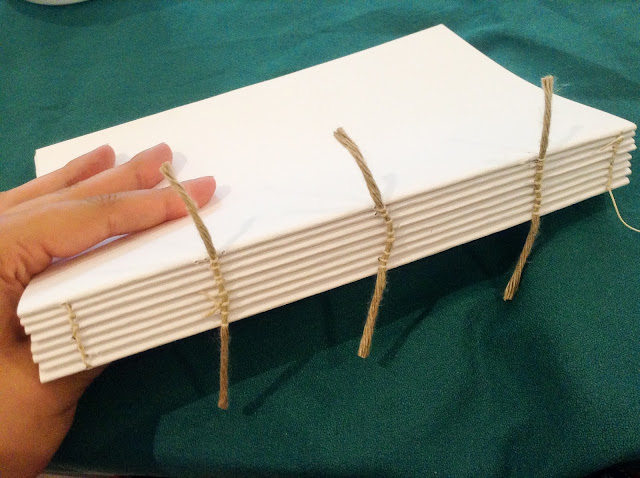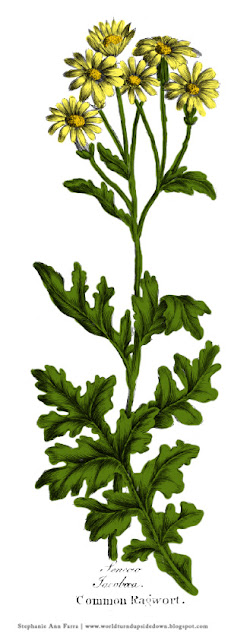Eckert was the aide-de-camp of military telegraph operations for General McClellan and soon became the administrator of the War Department's military telegraphs at the capitol and went on to become Assistant Secretary of War in 1866. The telegraphs are part of his personal collection and no doubt hold a lot of new information about the war that can only be discovered if everyone helps!
A blog dedicated to Early American History Lovers, Civil War Reenactors, Living Historians, and people that love the past. Lots of Historical Recipes and Patterns!
August 18, 2016
Help Decode 15,971 Civil War Telegrams!
July 25, 2016
18th Century Bookbinding with Ramon Townsend
Today I was fortunate enough to attend a class on Colonial Bookbinding will Williamsburg trained bookbinder Ramon Townsend at the Harrinton House, home of Walter Staib's A Taste of History.
First off, I was really excited to take this class as I love little journals and notebooks and have made quite a few in my life but have never had the chance to learn how to make them the 18th century way. I'm not kidding. I was so excited to take this class that I had that dream where you are late for something important and then everything that happens makes you more late. The universe also threw me for a loop when the morning of class my car decided it didn't want to start but finally acquiesced last minute and I made it in time. The class was so much fun and everyone left with a pretty book and I'm now in love with marbled paper.
I took a lot of pictures during the class in case anyone is interested in the whole process or curious exactly what is under the spine of old books. We used rag paper, paste and leather so these books should weather time as good as 18th century books have. Well made, 18th century books fare surprisingly better than many 19th century books due to the use of rag paper over wood pulp paper.
We each used a sewing frame to hold the cords in place for sewing. We each only made one book but the frame is designed to sew a stack of books at one time.
We learned how to sew in the signatures in the 18th century way. Along with the necessary stitches.
We glued down the cords to attach the covers.
Attached the leather to the spines.
Attached the decorative covers.
One of the other books made in the class.
We learned how to use embossing tools to decorate leather books.
It was an extremely enjoyable class and I hope to take the paper marbling and book repair class when they are offered again.
July 17, 2016
Civil War Era Recipe: Preserved Watermelon Rind
As you know, watermelon rind is poisonous.
I'm just kidding but a surprising number of people believe that it is true. It follows the theory that bitter tastes are a marker for things that can hurt you such as bitter almonds and poison ivy, but it is just a rumor and watermelon rind has a surprising amount of uses. It can be preserved and eaten as pieces, candied, pickled, and even be turned into jelly or preserves.
This recipe was cooked for the Historical Food Fortnightly. A yearly challenge that encourages bloggers to cook a historical food every two weeks as part of the challenge "Waste not, Want not" and what gets wasted more than watermelon rinds?
The Challenge: Waste Not, Want Not (July 1 - July 14) Good housekeeping in any historic era included making the most of your food items. Pick a recipe that involves avoiding waste (maybe reusing leftovers, or utilizing things commonly thrown out) and show us how historically-green you can be!
The Recipe:
The Date/Year and Region: 1850s-60s, United States
Ingredients:
- Watermelon Rind, cut into pieces or shapes
- Alum or Salt
- Lemon Peel
- Ginger
- Sugar, pound for pound to the rinds
- Cabbage Leaves for coloring
Instructions:
How Did You Make It:
Godey's Lady's Book in 1858 suggested soaking the pieces for 3 days in salt water, 3 days in alum water and 3 days in plain water (changing the water each day) to remove any alum flavor before preserving the rinds.
Time to Complete: Days to soak it but actual prepare time 30 mins to 1 hour.
Total Cost: $3.00 for the watermelon.
How Successful Was It?: I admit I was afraid to taste it. Something about the rind just sounds unappealing. But I forced myself too and it was delicious. If you didn't tell someone this was the rind of a watermelon, they'd think it was crisp, flavored, honeydew. The pieces aren't quite so toxic looking when light isn't shining through them. These would be a nice treat if made in different colors and flavors. The rind itself has a very neutral flavor good for absorbing other flavors.
How Accurate Is It?: I dyed with spinach instead of cabbage leaves. The first receipt I found said to layer in ivy leaves, but I did not feel confident in the safety of it.
June 22, 2016
A History of Royal Food and Feasting: Free Online Class!
This week the free online course "A History of Royal Food and Feasting" goes live. It is being hosted by the University of Reading in southeast England and focuses on the foodways of 5 key monarchs including Henry VIII and George III.
The class starts this week so don't miss out! I'm a huge proponent for MOOCs, alternative, and free education and this class is top quality. It is hosted on the FutureLearn website which offers many very interesting courses. I urge everyone to check them out.
The class starts this week so don't miss out! I'm a huge proponent for MOOCs, alternative, and free education and this class is top quality. It is hosted on the FutureLearn website which offers many very interesting courses. I urge everyone to check them out.
June 7, 2016
9 Colonial Herbs and Their Uses
-Elizabeth Blackwell
These etchings and the information are from John Hill's Virtues of British Herbs, first published in 1771. Sir John Hill was a prolific writer, doctor and botanist in the second half of the 1700s. He started apprenticing at an apothecary in his early years and went on to earn a medical degree at Edinburgh. He later opened his own apothecary shop. He was known for his multiple books on vegetables and herbs. His writings were so prolific, he was even wrongly attributed as the author of Hannah Glasse's The Art of Cookery Made Plain and Easy.
The herbs and flowers listed below would have been very familiar with 18th century women. Many of these grew naturally in Britain and the United States and these plants were commonly used as infusions to treat remedies or as compresses to be held against the skin. The book specifies that most of these useful herbs are found in fields, just as they are today. If you weren't paying attention, you probably would skip over them.
The book reviewer in The Critical Review in 1771 commented that Hill's book was likely intended for private families as the remedies were not in professional use at the time. It was nevertheless a popular book that went through multiple printings and found itself on both sides of the Atlantic by the 1850s.
***The information below is purely for educational purposes and is not medical advice.***
Although, many modern day herbalists and individuals will attest to their effectiveness, there have been few clinical trials on their uses as remedies. Never use a plant that you cannot identify 100 % and always be aware of the side effects of any plant you might want to use.
Coltsfoot
Leaves (Tussilago farfara)
Uses: Kidney Inflammation, Asthma, Consumption.
***Can cause liver damage.
Great Daisy / Chrysanthemum (Chrysanthemum
Leucanthemum)
Use:
Diuretic, to clean the kidneys.
Infusion
of leaves.
Daisy (Bellis perennis)
Uses: Fevers, Internal Inflammations
Infusion with Honey and Milk
Infusion with Honey and Milk
Receipt:
Clip small a quantity of the Leaves fresh
gathered; put them into an earthen pipkin,
and pour upon them as much boiling water as
will cover them. Let this stand all night. In
the morning boil it a few minutes; and put in
as much honey as will fweeten it. A half-pint
bafin of this mould be drank warm three times
a day.
English Chamomile (Anthemis Nobilis)
Uses: Improving Appetite, Assisting
Digestion: Strong tea made from the flowers.
Colic and Indigestion : Strong Tea made of
the leaves.
Feverfew (Matricaria parthenium)
Use: Relieves Headaches
Leaves as an
infusion or compress.
Goldenrod (Solidago)
Uses: Internal Bruising,
Diuretic.
Infusion of leaves, young leaves are best.
Senico (Senecio sarracenicus) or Broadleaf
Ragwort
Use: Heals bruises.
Used
as an infusion.
Tanzy (Tanacetum vulgare)
Uses: Relief of putrid Fevers and Epileptic Fits.
Flowers, powdered.
Yarrow (Achillea millefolium)
Use: Pain Relief
Drank as an infusion or made into a compress mixed with equal parts Toadflax.
Further Reading
Blackwell, Elizabeth. A Curious Herbal. London, 1739.
Dillon, Clarissa F. "a Work Highly of Use." Vol. 1. Harleysville, PA, 2006.
Dillon, Clarissa F. "a Work Highly of Use." Vol. 2. Harleysville, PA, 2011.
Tryon, Thomas. The Good House-wife Made a Doctor; Or, Health's Choice and Sure Friend Being a Plain Way of Nature's Own Prescribing, to Prevent and Cure Most Diseases... London: Printed for H. N. and T. S. and Sold by Randal Taylor, 1692.
|
|





























